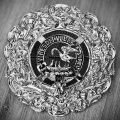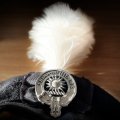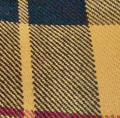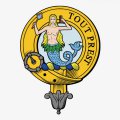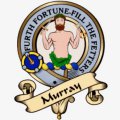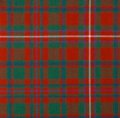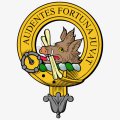© ericdentinger.com
2008-2025
SCOTTISH CLANS and SYMBOLS
Eric Maclewis - BAGPIPE SOUNDS
Eric Maclewis
Virescit Vulnere Virtus
Courage grows strong at a wound
The Stewart have their origin... in Brittany (France) where Alain Dapifer (11th century) officiated as Sénéchal (Steward) of Dol de Bretagne.
His great-grandson, Walter Fitzalan exercised this same function (officer in the service of a king or a bishop) with the King of Scotland David I (12th century) and is therefore considered as the founder of the Scottish line of the Stewarts.
The first Stewart to ascend the throne of Scotland was Robert II (14th century): he was followed by many Stewart sovereigns, first only in Scotland (1371 to 1714) and then in Scotland and England until 1714.
The best-known tartan is obviously the Royal Stewart one, which is also that of the British Royal family, but which, by its popularity, has the character of an universal tartan.
Considering the lack of a Clan Chief currently, the Clan Crest is borrowed from the Stuart of Galloway; it consists of:
- a pelican feeding his offspring, for the crest
- the motto: Virescit Vulnere Virtus
STEWART
It has been customary to differentiate Scottish clans by their tartans, which are very numerous today.
But this was not always the case: in the past, tartans were less colourful and their number much smaller.
Other signs made it possible to distinguish this or that family more surely, especially on the battlefield.
Badges such as flowers, plants or small branches were then used to recognise ourselves.
The clan symbol (crest) and its motto were other elements allowing this distinction even if these were rather the prerogative of the Chief of the Clan alone.
Today, the Scottish outfit contains a lot of these two badges, gathered within the Clan Crest, which will be found on the Sgian Dubh, the kilt pin, the cap badge, the plaid brooche, etc...
So, here is a review of the tartans, crests (symbols) and motto of the Scottish clans, which we will start with the famous clan Stewart:
I Birn Quhil I Se
I Burn While I See (shall)
Located in the outer Hebrides, the Isle of Lewis is one of the cradles of the Macleod of Lewis clan that extended over several islands as well as territories on the west coast of Scotland.
Although forming only one island, the territory is cut in two, between the lands of the Macleod of Lewis and those of the Macleod of Harris (south of the isle).
Originally there are two of Leod's sons (himself son of Olaf the Back according to the legend): Torquil (Sìol Thorcaill = seed of Torquil) for the Macleod of Lewis and Tormod (Sìol Thormoid = seed of Tormod) for those of Harris.
From the 16th to the 17th century, the Lewis branch died out following various conflicts and its territories passed to the Mackenzie clan.
Today, the clan is still active and represented by a descendant of the Macleod of Raasay, a branch of the original clan.
The motto nourished by various influences over time is subject to multiple conjectures and translations, among which the idea of beacons that enlighten to watch the coast seems to be in the majority.
The Clan Crest consists of:
- a resplendent sun, for the crest
- the motto: I Birn Quhil I Se
To be complete we must also mention the other motto in force since the Mackenzies: Luceo Non Uro (I shine but do not burn).
The main motto nevertheless remains faithful to I Birn Quhil I Se.
MACLEOD OF LEWIS
MURRAY
Tout Prest
Quite Ready
The family corresponding to the Murray Clan has been certified in Scotland since the 12th century.
Freskin of Moravia, of Flemish origin, is considered the ancestor of the clan that supplanted the Pictish and Celtic lords of the current maritime region of Moray (northeast Scotland).
Moray, Moravia (in Latin) and finally Murray are all derivatives of the Celtic or even Pictish place names that preceded them.
The clan supported, among other things, the wars of independence waged by William Wallace and Robert The Bruce in the 13th and 14th centuries as well as the Stuarts during the Jacobite revolts of the 17th and 18th centuries. In the 16th & 17th, due to various games of alliances, filiations and dispersal of descendants, the clan's lands expanded or migrated south, under the leadership of the Murray of Tullibardine and integrated the Atholl region.
The Murrays of Atholl are also heirs of the distant Freskin: the Duke of Atholl is also the current Clan Chief. He has a private army, the Atholl Highlanders, regiment created in 1777.
As for the tartan currently used, its origin dates back only to the 19th century.
We have two mottos incorporated into two different Clan crests:
- the official symbol of the Clan that represents the naked torso of a man holding a dagger in his right hand and a key in his left hand. It is mainly the crest of the Murray of Atholl that commemorates the capture of the last Lord of the Isles by the 1st Earl of Atholl.
The motto is Furth, Fortune and Fill the Fetters which can be translated as "Go against your enemies, be successful and come back with captives! "
- an older crest is also intended to represent the Murray clan: it depicts a mermaid holding a mirror in one hand and a comb in the other, with the motto in French: "Tout Prest"
Audates Fortuna Juvat
Fortune favours the Bold
The recognised ancestor of the Mackinnon clan appears in several graphic forms: sometimes Findanus or Fingon or as Fair-Born, each of these names from the same Gaelic origin (MacFhionghain).
Finally, the name of Mackinnon appears as the last Anglicised form of MacFhionghain or MacFingon = the Mackinnon are therefore the "sons of Fingon".
Fingon, who lived in the 10th century AD, was a descendant of Kenneth MacAlpin - the first king of Alba - who initiated the merger between Scots (Gaels) and Picts.
The clan is closely linked to the Abbey of Iona, founded in the 6th century by Saint Colomba as part of its mission of evangelising the future Scotland: several clan chiefs were thus abbots of Iona.
The small island of Iona extends its great neighbour, the isle of Mull where the clan was originally based.
After setbacks with the Macleans, the clan then established itself on the Isle of Skye, thanks to the granting of land by Robert The Bruce after the victory of Bannockburn (1314).
Dunakin Castle located on this same island of Skye later became the main residence of the Mackinnon lairds.
The Mackinnons of course also contributed to the Jacobite rebellions of the 17th and 18th centuries and to cover the flight of Bonnie Prince Charlie in 1746 after the rout of Culloden Moor.
The Crest of the clan represents a boar's head holding a bone (tibia) of a deer = this figuration refers to a hunting story where the boar was mastered by blocking its jaws with a deer bone.
The Motto "Audentes Fortuna Juvat", is a formula inherited from the Latin poet Virgil.
Previously we had rather a slogan: Cuimhnich bas Alpan = Remember the Death of Alpin - NDLA: Alpin was the father of Kenneth MacAlpin, executed by the Picts in Galloway in 834.
This rallying cry dates from the 16th century and subsequently gave way to the motto in Latin but it is still regularly found on the symbols of the clan.
MACKINNON








